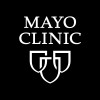
Search for Methods to Predict the Development of Heart Failure After Myocardial Infarction
Myocardial InfarctionIntroduction Despite significant progresses in the diagnosis of myocardial infarction and the development of reperfusion treatment methods, heart failure still often complicates its course. There are three types of postinfarction heart failure: occurring in the acute period, during hospital treatment and after discharge. Factors contributing to heart failure during hospitalization for MI and after discharge include comorbidity of the patient, worsening of pre-existing CHF and comorbidities. In the last decades we can observe higher level of myocardial percutaneous coronary intervention (PCI), improvement of pre-hospital care, which decreased mortality and HF; however, the proportion of HF patients with preserved ejection fraction increased. All these factors determine the urgency of the studied problem. Purpose of the study To identify the most significant factors contributing to the development of acute and subacute heart failure after myocardial infarction Materials and methods Retrospective and prospective non-randomized parallel-group analysis of 186 suffered MI (mean age 63.5 y) during one year was performed in this work, and in the main group of patients (86 patients) at 30 days after MI, chronic heart failure over 2F by NYHA was confirmed, and in comparison group (100 patients) CHF was either absent or did not exceed 2F by NYHA. The diagnosis of MI and CHF was made according to national and European guidelines. Both groups received standard therapy for CHF: ACE inhibitors/angiotensin 2/angiotensin receptor antagonists and neprolysin inhibitor (ARNI), β-blockers, mineralocorticoid receptor antagonists (AMCR), SGLT2-receptor inhibitors; anticoagulants, antiplatelet agents, statins, diuretics if necessary were also used. One year after discharge, clinical outcomes were assessed: cardiovascular mortality, repeated hospitalizations due to decompensation of CHF, death from other causes, stroke, repeated myocardial infarction, unscheduled coronary revascularization; telephone contacts were made every month, repeat visits to the clinic - one year later. The results were based on the information collected in the course of telephone contacts and via e-mail; hospitalizations were also monitored by querying the databases of medical institutions.

MINI-AMI: Minimizing Infarct Size With Impella 2.5 Following PCI for Acute Myocardial Infarction...
ST-elevation Myocardial InfarctionA prospective, randomized, controlled multi-site feasibility trial to assess the potential role of the IMPELLA® 2.5 System in reducing infarct size in patients with ST-elevation myocardial infarction (STEMI)

On-treatment PLAtelet Reactivity-guided Therapy Modification FOR ST-segment Elevation Myocardial...
Acute ST-elevation Myocardial InfarctionAdequate platelet inhibition with dual antiplatelet therapy is a key therapeutic goal after primary percutaneous coronary intervention (PPCI), aimed at protecting against stent thrombosis and increased mortality. Recent aggregometric assays have shown that up to one third of acute coronary syndrome patients treated with clopidogrel have incomplete inhibition of adenosine diphosphate(ADP)-induced platelet aggregation while the number of patients treated with aspirin who have incomplete inhibition of thromboxane A2-induced platelet aggregation (ASPI)is much lower. High on-treatment platelet reactivity (HTPR) has been associated with an increased rate of ischemic events after PCI. However, recent large trials did not show a clinical benefit of TPR-guided therapy modification in acute coronary syndrome patients treated by PCI. On-treatment PLAtelet reactivity-guided Therapy modification FOR ST-segment elevation Myocardial infarction (PLATFORM) is an investigator-initiated, prospective, randomized, parallel-group, controlled clinical trial designed to test the hypothesis that antiplatelet therapy modification is superior to standard antiplatelet regimen among intermediate to high-risk STEMI patients undergoing PPCI. The safety hypothesis is that compared with control arm, interventional study arm will have similar rates of non-coronary artery bypass graft surgery-related bleeding. Approximately 632 ST-elevation myocardial infarction (STEMI) patients with intermediate to high-risk (RISK-PCI score >3) clinical features undergoing PPCI will be randomly allocated to treatment modification or standard treatment. Low responders to aspirin will receive 200 mg aspirin for 30 days. Low responders to clopidogrel will receive 180 mg ticagrelor for 1 year. Patients will be followed up to 1 year after PPCI.

Stentys Coronary Stent System Clinical Trial in Patients With Acute Myocardial Infarction
Acute Myocardial InfarctionThis study will test compare the Stentys Stent with the Multi-Link Vision™ stent system (Abbott Vascular Inc.)in patients with a heart attack. It is expected that the Stentys stent is not worse than the Vision stent.

Complete Infarct Related Artery Revascularization
Myocardial InfarctionCoronary Artery DiseaseCORAMI trial is a prospective, international, multicenter randomized study which will be performed in experienced invasive facility centres with 24/7 PCI (percutaneous coronary intervention) duty and patient enrollment will continue for 18 months (October 2010 - March 2012).The aim of the study is to compare strategy of complete vs target lesion-only primary PCI in IRA (infarct related artery) in STEMI (ST elevation myocardial infarction) patients.

Aspirin in Patients With Myocardial Infarction and Thrombocytopenia
ThrombocytopeniaMyocardial InfarctionPrimary Objective: To determine the risk of bleeding from ASA therapy in thrombocytopenic patients who develop Acute Coronary Syndrome (ACS), and assess its effect on the overall morbidity and mortality in these patients as well as platelet functions.

Dalteparin Versus Unfractionated Heparin In Patients With Acute Coronary Syndrome
AnginaUnstable1 moreTo compare efficacy and safety of dalteparin compared to unfractionated heparin in patients of non ST elevation acute coronary syndromes who are planned to undergo coronary interventions (angioplasty or bypass surgery)

BELIEVE Study: Nesiritide and Post Myocardial Infarction Left Ventricular Modeling
Myocardial InfarctionThis study is being done to determine the effects (good and bad) of intravenous infusion of a human brain natriuretic peptide (BNP), Natrecor (nesiritide), a hormone produced by the heart in persons who have just suffered a heart attack. The human BNP, Natrecor (nesiritide) has been approved by the United States Food and Drug Administration (FDA) to be given intravenously for the management of acute heart failure. It is unknown if human BNP may have good effects on the pumping function of the heart after a heart attack.

Thrombolysis Versus Primary Angioplasty for AMI in Elderly Patients
Acute Myocardial InfarctionGeneral objective: To compare the efficacy and safety of primary angioplasty(PA) with that of thrombolytic therapy (TT) for the treatment of AMI in patients >=75 years old with ST-segment elevation or LBBB AMI <6 hours of evolution without contraindications for TT. Hypothesis: The therapeutical strategy based on PA is superior to that based initially on TT in patients >=75 years old with AMI. Participating Centers: 27 Spanish hospitals performing >50 PA/year. Primary Endpoint (PE): Incidence of the aggregate of death of any cause, reinfarction or disabling stroke at 30 days. There are also 7 secondary endpoints (SE). Procedure: Diagnosis of inclusion/exclusion criteria --> Centralized randomization --> Treatment allocation to 1) TT with weight adjusted TNK + unfractionated heparin or 2) PA within 120 minutes. Estimated Sample size and recruitment time: 570 patients in 19 months. Follow-up: Blinded evaluation of events (PROBE regulations) specified in PE and SE at 30 days and 12 months. Quality control: 100% variable and follow-up review by external CRO. Safety Committee and Event Adjudication Committee formed by experts not participating in the study.

Impact of Daylight on Patients With Acute Myocardial Infarction
Coronary ArteriosclerosisMyocardial InfarctionThe study tests if intense light could be a potential therapy in humans after myocardial infarction by inducing Per2.
